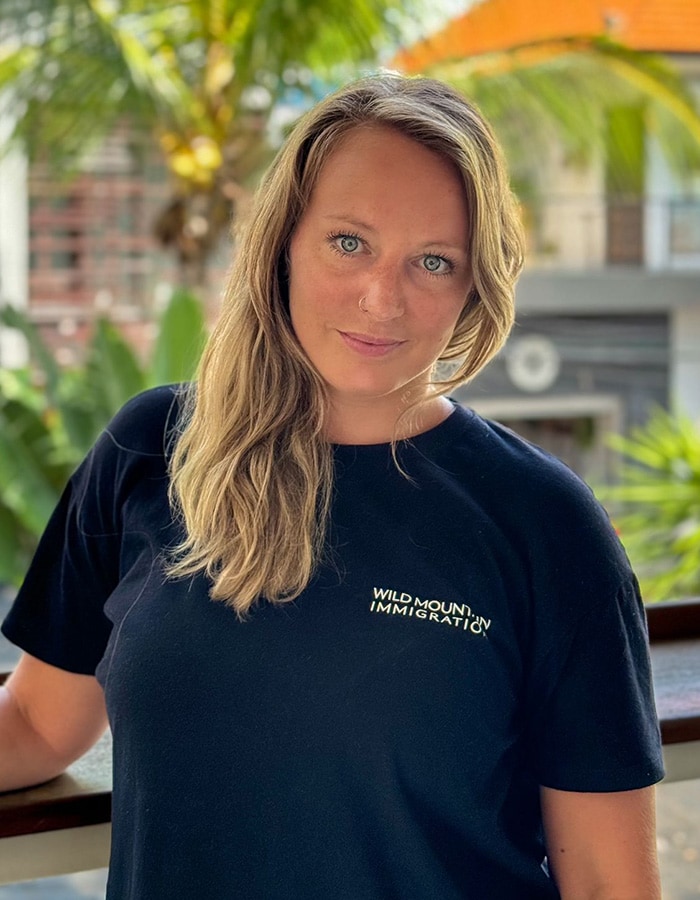If you’re transitioning from temporary status to permanent residence in Canada, the Bridging Open Work Permit (BOWP) is a key resource that allows you to keep working while your Permanent Residence (PR) application is processed. A common question for many is, “who can apply for BOWP?” Understanding the eligibility criteria, application process, and conditions can help ensure a smooth transition without disruptions to your work or status in Canada.
The BOWP bridges the gap between the expiry of your current work permit and the final decision on your PR application. This permit plays a significant role in programs like Express Entry and Provincial Nominee Programs, including options available through the BC Provincial Nominee Program and the Alberta Advantage Immigration Program. It also supports graduates seeking to maintain employment after their Post-Graduation Work Permit expires.
This guide covers everything you need to know, including how to apply for BOWP step by step, BOWP processing time, and BOWP validity. It also addresses special considerations like BOWP for spouses and whether it’s possible to apply for BOWP without an Invitation to Apply (ITA). Additionally, applicants familiar with Express Entry can better navigate related processes, such as meeting the requirements for proof of funds for Express Entry.
Understanding the bridging open work permit fee and the documentation required is crucial to ensuring a successful application. The BOWP not only supports the principal applicant but also provides opportunities for family members to maintain their legal status in Canada.

Canadian Immigration Consultant
Let our expert team of Canadian immigration consultants guide you through the complexities of Canada’s immigration process. We provide personalized, step-by-step support to ensure a smooth and successful journey to your new life in Canada.
What is a Bridging Open Work Permit?
A Bridging Open Work Permit (BOWP) is a temporary work permit that allows foreign nationals in Canada to continue working while waiting for a decision on their Permanent Residence (PR) application. It ensures you maintain legal work status during this critical period, helping to bridge the gap between the expiry of your current permit and the finalization of your PR status.
For those wondering, “who can apply for BOWP,” eligibility primarily hinges on having a valid PR application in progress under a program such as Express Entry or a Provincial Nominee Program. BOWPs provide flexibility, allowing you to work for most employers in Canada, unlike closed work permits tied to a specific employer.
While the BOWP validity often aligns with your passport’s expiry date, there may be location-based restrictions for applicants under programs like the Alberta Advantage Immigration Program or BC Provincial Nominee Program. This permit also benefits families, with spouses potentially eligible for an open work permit if the principal applicant meets certain employment conditions.
Who Can Apply for a BOWP?
The question of “who can apply for BOWP” is crucial for individuals transitioning from temporary to permanent residency. To qualify for a Bridging Open Work Permit, applicants must meet specific criteria set by Immigration, Refugees and Citizenship Canada (IRCC). These include:
1. Being in Canada: Applicants must physically reside in Canada at the time of the application.
2. Having valid status: You must hold a valid work permit or be eligible to restore your temporary resident status as a worker.
3. Submitting a complete PR application: The BOWP is only available to those who have a Permanent Residence application in progress under an eligible immigration program. These include:
- Express Entry programs, such as the Federal
- Skilled Worker Program or Canadian Experience Class.
- Streams under the Provincial Nominee Program, including provincial pathways like the BC PNP or
- Alberta Advantage Immigration Program. Other pilot programs like the Agri-Food Pilot.
Additionally, applicants must have received an Acknowledgment of Receipt (AOR) or Approval in Principle (AIP) from IRCC for their PR application.
For those asking, “Can I apply for BOWP without ITA?”, the answer is no. A valid PR application must already be submitted and acknowledged. Having only an Invitation to Apply (ITA) or a provincial nomination does not qualify you for a BOWP.
This permit also has significant benefits for family members. Spouses and common-law partners may be eligible for an open work permit if the principal applicant meets specific employment criteria. To learn more about related pathways, you can refer to resources on spousal sponsorship and work permit options for dependents.
Who Is Not Eligible for a BOWP?
While the Bridging Open Work Permit (BOWP) is a valuable tool for many, not everyone qualifies. Understanding who cannot apply for BOWP is just as important to avoid unnecessary delays or application refusals.
You are not eligible for a BOWP if:
1. You do not have a PR application in process:
Only individuals with an active Permanent Residence application under an eligible program are qualified. If you have only created an Express Entry profile or received a provincial nomination but haven’t submitted your PR application, you are not eligible.
For those navigating Express Entry, ensure your application includes proper documentation, such as proof of funds.
2. Your work permit has expired, and you failed to restore status:
You must either hold a valid work permit or be eligible to restore your status to apply for a BOWP. If your status has expired and 90 days have passed, you cannot apply.
3. You are outside Canada:
The BOWP application must be submitted from within Canada. Applications from ports of entry, overseas visa offices, or foreign locations are not accepted.
4. You are inadmissible to Canada:
Individuals with inadmissibility issues, such as certain criminal convictions or misrepresentation, are disqualified.
5. You fall under an exempt category:
Certain individuals working in Canada without a work permit (e.g., religious or business visitors) are not eligible for a BOWP.
6. Your family members do not meet the criteria:
While spouses and dependents may qualify for their own open work or study permits, they cannot apply for a BOWP themselves. Programs like Spousal Sponsorship may provide alternative pathways for dependents.
Understanding these exclusions can help you assess your eligibility before applying. For applicants who are unsure about their status, it may be helpful to consult resources on maintained status or restoration processes.
What Are the Benefits of a BOWP?
The Bridging Open Work Permit (BOWP) offers significant advantages for individuals awaiting the outcome of their Permanent Residence (PR) application. By addressing the question of “who can apply for BOWP”, it becomes clear how this permit can provide stability and flexibility during the transition from temporary to permanent residency.
Here are the key benefits of a BOWP:
The BOWP allows you to continue working legally in Canada while your PR application is being processed, preventing gaps in employment. This is especially important for individuals transitioning from a Post-Graduation Work Permit or other temporary permits.
Unlike employer-specific work permits, the BOWP is an open permit, which means you can work for almost any employer across Canada. This is particularly beneficial for those seeking new opportunities or more favorable employment conditions.
If you are eligible for a BOWP, your spouse may qualify for an open work permit, and your children can extend their status to continue studying or living in Canada. Programs like Spousal Sponsorship provide further support for families during the immigration process.
Applicants under the BC Provincial Nominee Program or Alberta Advantage Immigration Program can secure work permits tied to their province, ensuring they meet PR pathway conditions while continuing to work locally.
Submitting a BOWP application before your current permit expires ensures you remain on maintained status, allowing you to work legally until a decision is made on your new permit.
The BOWP bridges the gap between your temporary permit and PR status, allowing you to focus on settling into Canada without worrying about losing your work authorization.
These benefits make the BOWP an essential tool for PR applicants, particularly those in high-demand industries or programs such as Express Entry.
Conditions and Restrictions for BOWP Holders
While the Bridging Open Work Permit (BOWP) provides significant flexibility, there are conditions and restrictions applicants must be aware of. Understanding these rules can help ensure compliance and avoid potential issues during your immigration journey.
1. Provincial Nominee Program (PNP) Restrictions:
For applicants under the BC Provincial Nominee Program or Alberta Advantage Immigration Program, employment may be restricted to the province that issued the nomination. This ensures applicants continue to meet the requirements of their PR pathway.
2. Occupation-Based Restrictions:
Although the BOWP is an open work permit, some jobs, such as those in healthcare or childcare, may require additional medical exams. If you plan to work in these sectors, ensure you complete the necessary health checks.
3. Validity Limitations:
The BOWP validity typically matches the expiration date of your passport or the estimated time frame for PR processing. Applicants are encouraged to have a passport valid for at least two years to maximize the permit duration.
4. Maintained Status Rules:
Applicants who submit their BOWP application while their current work permit is still valid will remain on maintained status, meaning they can continue working until a decision is made.
5. Travel Outside Canada:
Holding a BOWP does not guarantee re-entry into Canada. Applicants must ensure they have a valid Electronic Travel Authorization (eTA) or Temporary Resident Visa (TRV) to return.
By adhering to these conditions, BOWP holders can work legally and maintain compliance with immigration regulations.
How to Apply for a BOWP
Applying for a Bridging Open Work Permit (BOWP) can be straightforward if you follow these steps:
Ensure you meet the criteria for a BOWP. You must have a valid PR application in progress, maintain temporary resident status, and either hold a valid work permit or be eligible to restore your status.
Collect the required documents, which include:
- A valid passport with sufficient validity to cover the permit duration.
- A copy of your current work permit.
- Proof of your PR application, such as an Acknowledgment of Receipt (AOR) or Approval in Principle (AIP) letter.
- Any additional documents requested in the IRCC online portal.
Log in to your IRCC Secure Account and select the option to extend your work permit. Complete the online form, upload the required documents, and double-check that all details are accurate.
The total bridging open work permit fee includes:
- $155 for the work permit application.
- $100 for the open work permit holder fee.
- $85 for biometrics, if applicable.
The BOWP processing time usually ranges from 3 to 4 months, though this may vary depending on your case and IRCC’s workload. If you applied while your work permit was still valid, you remain on maintained status, which allows you to work legally until a decision is made.
If your work permit has expired, you may still apply for a BOWP by requesting a restoration of status within 90 days. Note that you cannot work until the BOWP is approved. To learn more about maintaining your legal status during this process, refer to our blog What is Maintained Status?.
Conclusion
The Bridging Open Work Permit (BOWP) is a vital option for individuals transitioning from temporary to permanent residency in Canada. It ensures uninterrupted work authorization, allowing applicants to maintain stability in their professional and personal lives while awaiting a decision on their Permanent Residence application.
By understanding who can apply for BOWP, the application process, and the associated conditions, you can avoid unnecessary delays and maximize the benefits of this permit. Whether it’s ensuring your documents are complete, adhering to work restrictions under programs like the BC Provincial Nominee Program, or maintaining status during processing, thorough preparation is key.
The BOWP also offers significant support for families, with spouses and dependents able to extend their status or apply for separate permits. If you’re navigating the complexities of Canada’s immigration system, ensure you explore related programs like Express Entry or Spousal Sponsorship to fully leverage your options.
How We Can Help
At Wild Mountain Immigration, our experienced team of certified Canadian immigration consultants is here to help you navigate the complexities of the immigration system. Whether you’re applying for permanent residency, a work permit, or dealing with a complex immigration case, we provide personalized support tailored to your needs.
Contact us today to learn how we can help you achieve your Canadian immigration goals.
FAQs
To be eligible for a Bridging Open Work Permit (BOWP) in Canada, you must:
- Be physically present in Canada.
- Hold valid temporary resident status or be eligible to restore your status.
- Have submitted a complete Permanent Residence (PR) application under an eligible program (e.g., Express Entry, Provincial Nominee Program).
- Have received an Acknowledgment of Receipt (AOR) or Approval in Principle (AIP) letter from Immigration, Refugees and Citizenship Canada (IRCC).
A bridging visa, commonly referred to as a Bridging Open Work Permit (BOWP) in Canada, is available to individuals with an active PR application. Applicants must hold valid temporary resident status in Canada and meet eligibility criteria under specific economic immigration programs like Express Entry or the Provincial Nominee Program.
No, you cannot apply for a BOWP without an Acknowledgment of Receipt (AOR) from IRCC. The AOR serves as proof that your PR application has been submitted and is in progress. Without this, your BOWP application will be refused.
Yes, you can work while waiting for your BOWP approval if you applied before your current work permit expired. In this case, you will have maintained status, allowing you to continue working under the same conditions as your previous permit until a decision is made.
If your PR application is rejected, your BOWP remains valid until its expiry date. You can continue working in Canada legally during this time. However, if you wish to stay beyond the BOWP’s expiry, you will need to explore other permit options or reapply for PR if eligible.
To work legally in Canada, you must have a valid work permit. Options include:
- Applying for a Bridging Open Work Permit if you have a PR application in progress.
- Obtaining an employer-specific work permit through programs like the Labour Market Impact Assessment (LMIA) process.
- Applying for an open work permit through pathways such as the Post-Graduation Work Permit (PGWP) or as the spouse of a worker or student.
Each pathway has specific requirements, so it’s crucial to choose the one that matches your situation.
Canadian Immigration FAQs
Find quick answers to the most common questions about Canadian immigration, visas, and permanent residency.
LMIA Costs Explained: How Much Does LMIA Cost in 2024?
For Canadian employers seeking to hire foreign workers, a Labour Market…
Can I Leave Canada After Applying for Spousal Sponsorship?
When applying for spousal sponsorship in Canada, many applicants wonder,…
Understanding LMIA Employer Requirements in Canada
Hiring foreign talent is an effective solution for Canadian businesses facing…
Start Your Canadian Immigration Journey
Our experts make the process clear, stress-free, and successful, so you can move forward with confidence and focus on what matters most.

Contact Us
Immigration questions and service enquiries
Consultation
Speak to an expert
immigration consultant
"*" indicates required fields



